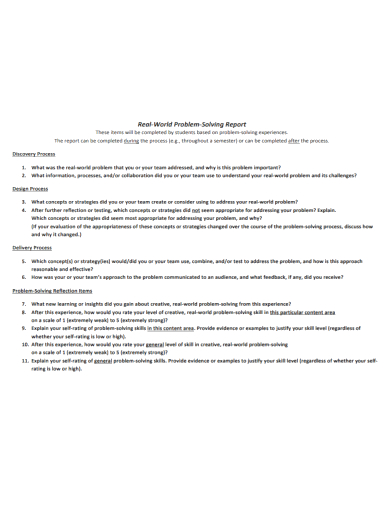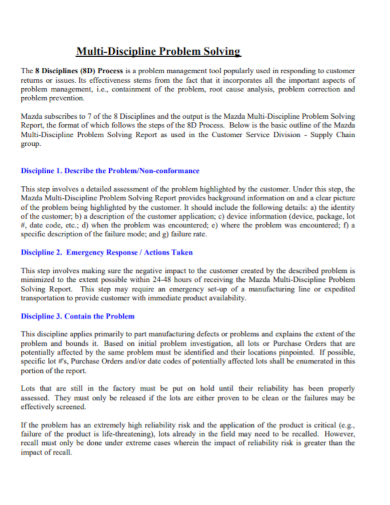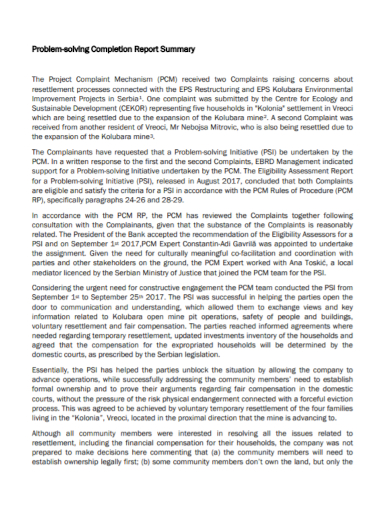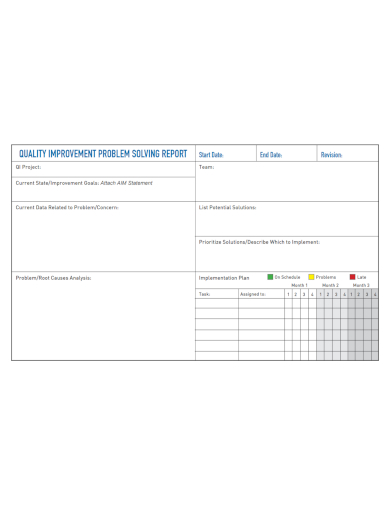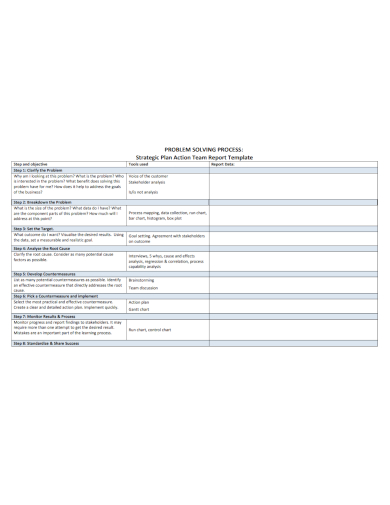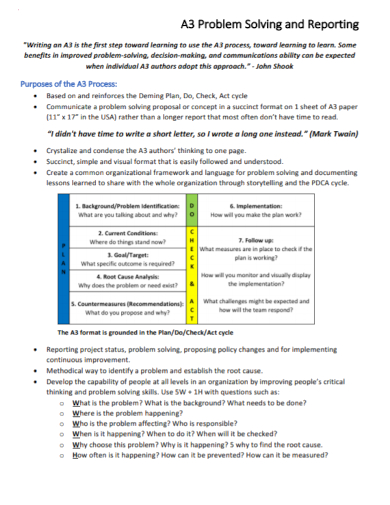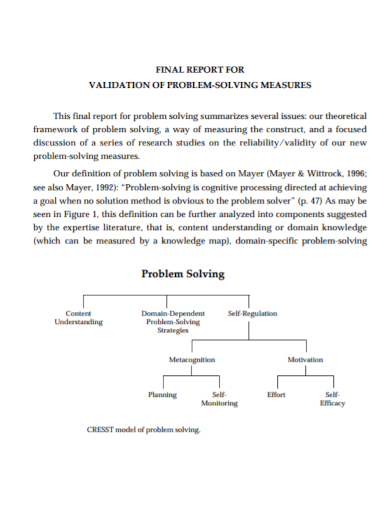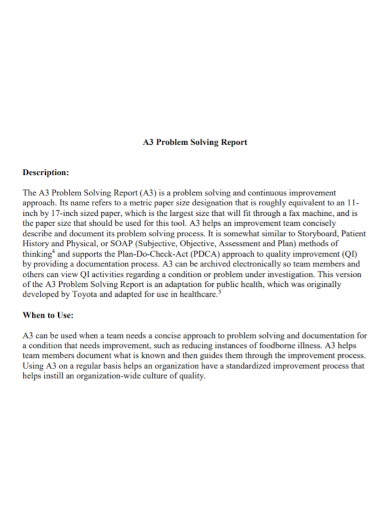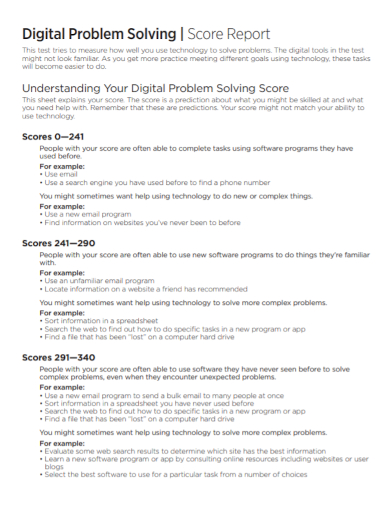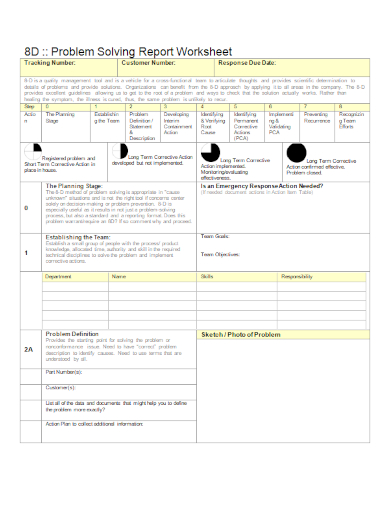10+ Problem Solving Report Samples
Whether it may be for personal or professional reasons, problem solving skills are very important to have. Being good at problem solving shows a scope of different abilities like flexibility, creativity, and logic. What’s more, it helps you figure out how to take a gander at challenges through a new viewpoint. This is why they let little children constantly practice their problem solving skills at school, and why employers value these skills just as much. So, to assist you with your career or home life, here are free examples of Problem Solving Report. Continue reading to discover more!
1. Student Problem Solving Report
2. Multi-Discipline Problem Solving Report
3. Problem-Solving Completion Report Summary
4. Quality Improvement Problem Solving Report
5. Problem-Solving Strategic Plan Report
6. Problem-Solving Report
7. Final Validation Problem Solving Report
8. Problem-Solving Business Report
9. Problem-Solving Report Format
10. Digital Problem Solving Score Report
11. Problem-Solving Report Worksheet
What Is a Problem Solving Report?
Problem solving is a psychological and methodical process that includes finding, dissecting, and taking care of issues. The Problem Solving Report helps you to understand what’s going on in your current circumstance, distinguish things you need to change and then sort out the things that should be done to make the ideal result. This way, it is easier for you to make educated decisions, which will cause your work and daily life to be much better.
How to Make a Problem Solving Report
Employers value problem-solving abilities because they demonstrate a variety of other qualities such as logic, creativity, resilience, imagination, lateral thinking, and determination. It’s an important talent to have in both your career and personal life. Aside from the variety of free Problem Solving Report template that is provided above, you can also make one of your own! Here are some general steps you should remember in making a Problem Solving Report:
1. Identify the issue.
As you identify the issue, specifically make sure that you are looking for the core problem, as the effects could be mistaken as the root cause in a very major way. Additionally, it is vital to literally look at this objectively, and to separate the facts from opinion. This really is why the needed data and information should mostly be taken into account. They are quite significant. Also, don’t forget to review how current processes work and in which the problem actually stands. Flowcharts could be incorporated to distinguish the normal strides of a process and to characterize and dissect very main drivers.
2. Producing alternatives.
It is very helpful if you come up with various alternatives to your problem. This could be done through brainstorming, specifically with a group that includes all the people involved in the problem. In this step, the generation of ideas must be the main priority; the evaluation must be delayed until the next step. So, even when the proposed alternative doesn’t seem like it’s the best, list it down and consider it later. Just make sure that it is in line with the main objective. If you do it this way, there would be room for acquiring genuine improvement and at the same time, gaining a new lesson, which could be valuable for the future.
3. Assessing and choosing alternatives.
When choosing alternatives, choose one that will not only work the problem out but will also not bring about another unnecessary one. Of course, there should be no bias, so you must make sure that all those that are involved accept the considered alternative. This alternative must also be realistic to your given circumstance. You should assess all of the possible effects if this solution were to take place. Leave no room for confusion and doubt by being clear with everything the solution entails.
4. Carrying out a solution.
To carry out the solution properly, you must first do a test run and accumulate input from those influenced by it. If there is consensus from them, then you can proceed into setting up continuous measures. After all of that, asses the long haul results of this alternative. Notwithstanding how the solution is carried out, input channels ought to be incorporated into the execution. This takes constant observing and testing. Solutions are best if it stays and is refreshed to react to future changes.
FAQ
Why is it vital to solve complex problems?
Problems are rarely handled on one’s own, therefore possessing complicated problem-solving skills is advantageous when working with others. This keeps the team focused on actual solutions and prevents them from becoming distracted by potentially impossible ideas.
What is the objective of a Problem Solving report?
A report’s goal is to give facts about a subject in a straightforward and objective manner.
What are problem-solving models and how do they work?
To handle the myriad difficulties that arise in the workplace, problem solving models are applied. Using a shared, collaborative, and methodical approach to problem solving, complex difficulties for teams, working groups, and boards, for example, are frequently solved more quickly.
Problem solving is the root of the progress we made as a society; therefore, to practice our skills in this area is to ensure a great future ahead of us. Download our free, editable, and printable samples of Problem Solving Reports develop better problem solvers, and in turn, an improved world.
Related Posts
FREE 10+ Mental Status Examination Report Samples
FREE 10+ Incident Flow Chart Samples
FREE 10+ Agricultural Research Samples
FREE 10+ Charity Annual Report Samples
FREE 9+ Sample Action Reports
FREE 8+ Sample Data Analysis Reports
FREE 8+ Sample Professional Summary
FREE 6+ Manager Evaluation Samples
FREE 6+ Audit Plan Samples
FREE 5+ English Tutor Cover Letter Samples
FREE 26+ Daily Log Templates
FREE 12+ Incident Root Cause Analysis Templates
FREE 10+ Construction Meeting Minutes Samples
FREE 10+ Skills Gap Analysis Samples
FREE 9+ Sample Meeting Planning

